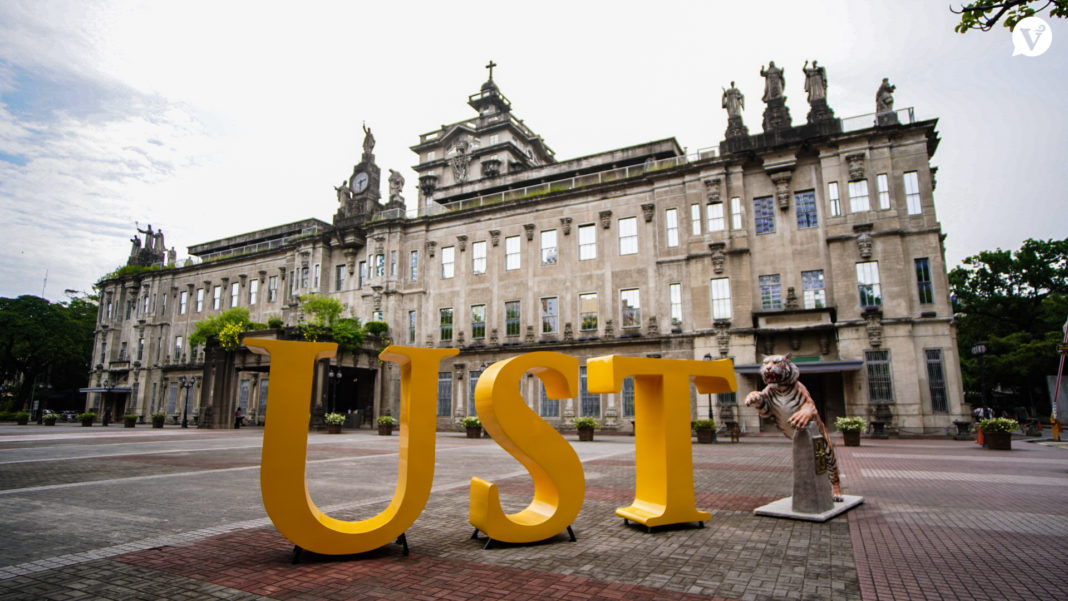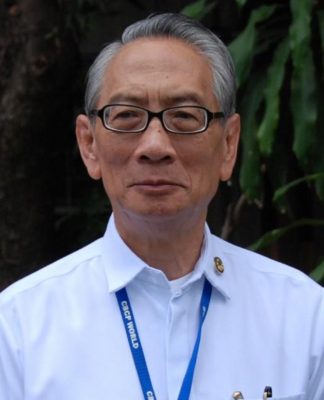The University won’t shift to a 50-50 hybrid learning mode until Academic Year (AY) 2023-2024 or August 2023, the Office of the Vice Rector for Academic Affairs (OVRAA) said.
For Term 2 of the current academic year, AY 2022-2023, UST will adopt the “best combination” of onsite and online class hours, Vice Rector for Academic Affairs Prof. Cheryl Peralta told the Varsitarian.
The second term, which will start on Jan. 16, will be a “transitory period,” she said.
“We will maintain the principle of constructive alignment as a basis for determining how courses should be taught. To maximize our gains from enriched virtual mode (EVM) of instruction, academic units shall plan the best combination of onsite and online hours for each of the courses in their respective curricula,” Peralta said.
On Nov. 11, the Commission on Higher Education (CHEd) ordered all higher education institutions (HEIs) to conduct at least 50 percent of total learning hours on-site effective Term 2.
According to CHEd Memorandum Order (CMO) No. 16, HEIs planning to hold zero to 49 percent of classes on-site need to secure CHEd clearance, while those planning to conduct full face-to-face (F2F) classes do not need approval.
“We will communicate our institutional transition plan to CHEd, as required by CMO 16, s2022,” Peralta said.
She said discussions on the transition plan began during the monthly meeting of academic unit heads in September 2022, before the CHEd memorandum took effect.
Peralta said the University was working to have all programs hold limited F2F classes by next term.
Academic unit heads are required to submit transition plans for hybrid learning to the OVRAA by Jan. 11, 2023, five days before the start of the second term.
“We requested them to ensure that stakeholders are informed of their plans for the second term AY 2022-2023 as soon as possible,” Peralta said.
Peralta said UST would still apply for the CHEd Safety Seal to assure stakeholders that the resumption of F2F classes would be done safely.
The CHEd Safety Seal is a voluntary certification given to HEIs that have adopted minimum health standards and use the StaySafe.PH app for contact tracing. Academic units that have completed the process may begin on-site classes, Peralta said.
According to the vice rector, all basic education, baccalaureate degree programs (including the Faculty of Medicine and Surgery), and 10 graduate programs have been cleared by the University Crisis Management Committee to conduct in-person classes and assessments as of Dec. 5.
The EVM remained the default mode of instructional delivery for all programs in the first term of AY 2022 to 2023, with an option for the EVM hybrid or EVM hyflex modes.
The EVM hybrid mode requires students to complete a specific number of F2F classes to accomplish the intended learning outcomes of select courses or subjects that cannot be fully achieved with online learning.
Meanwhile, students can participate in either F2F or online classes in the EVM hyflex mode. The hyflex mode is for courses and subjects whose outcomes and competencies may be achieved with online learning, but F2F classes may “enrich the learning experience.”
















